Netflix’s KPop Demon Hunters is a viral marketing case study in the making
The surprise Netflix hit shows how fandom strategy and timing can outshine big-budget reboots
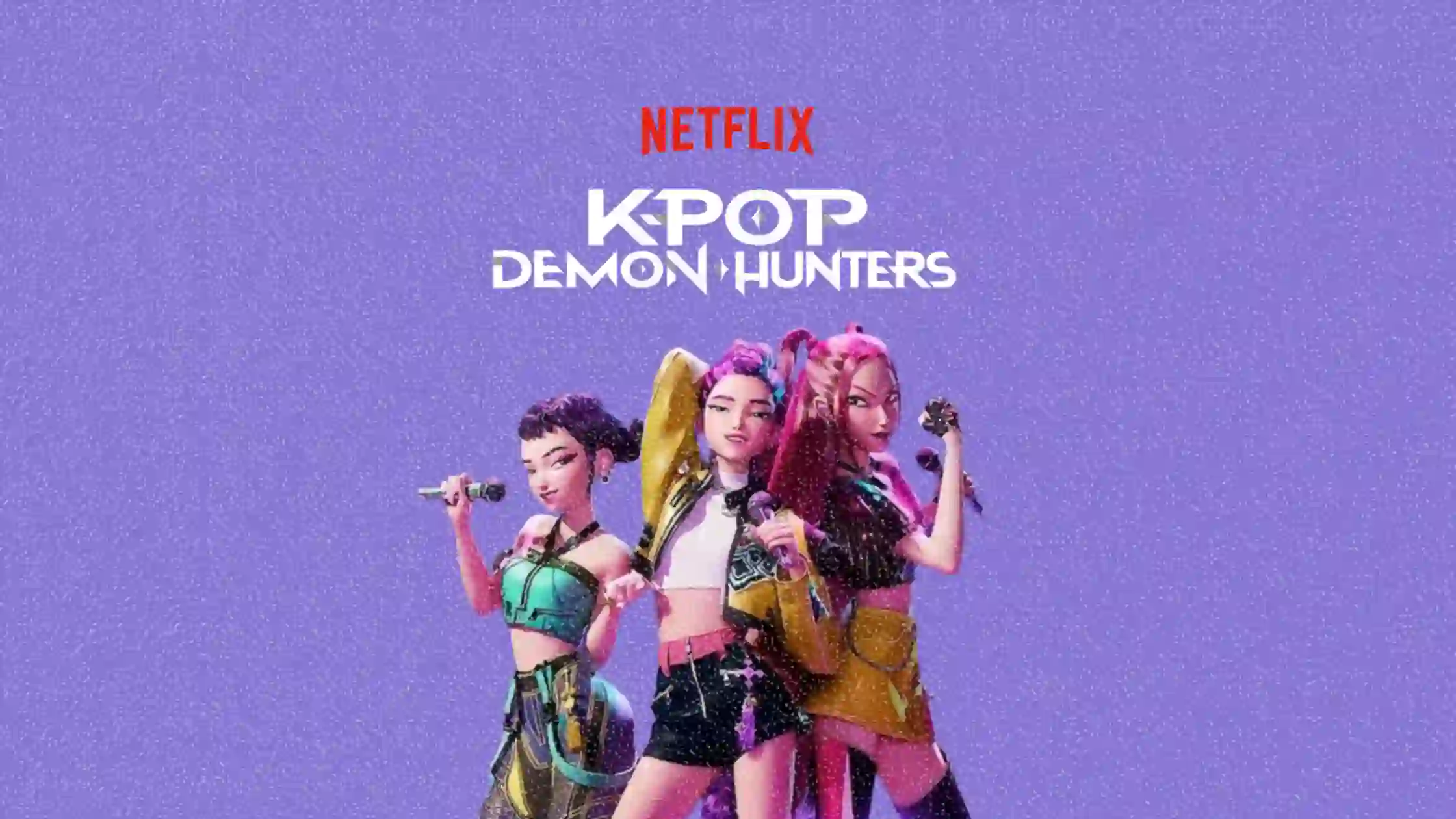
Netflix didn’t just release another animated film. With KPop Demon Hunters, it unleashed a digital firestorm.
The action-fantasy animation about a K-pop girl group who moonlight as demon slayers has exploded in global visibility, outperforming several major theatrical releases in online buzz. What started as a niche-sounding title became a cultural juggernaut, thanks in large part to Netflix’s strategic social engagement and a well-timed boost from real-life K-pop royalty.
This article explores how KPop Demon Hunters used fandom-fueled marketing, influencer moments, and real-time content amplification to become one of 2025’s biggest streaming surprises. Here’s what marketers can take away from it.
Short on time?
Here’s a table of contents for quick access:
- KPop Demon Hunters by the numbers
- How Netflix activated fandoms at scale
- The Jungkook effect: real-time engagement done right
- What marketers should know: 3 strategic takeaways
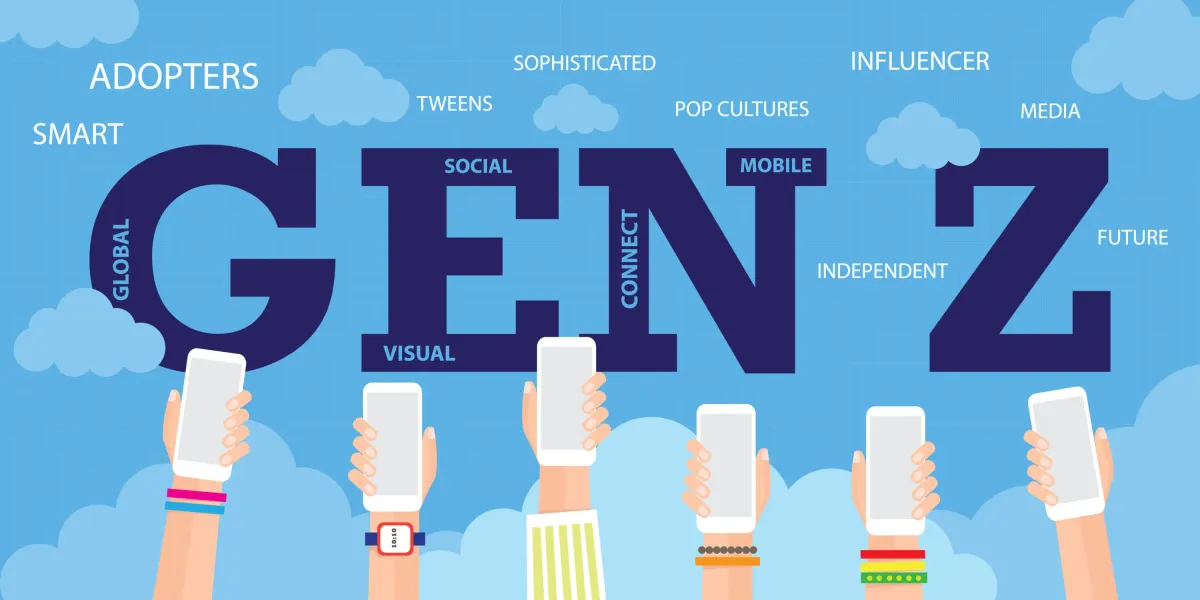
KPop Demon Hunters by the numbers
According to data from Meltwater between May 1 and August 12, 2025, KPop Demon Hunters generated more online engagement than any other film on a list of major summer titles, despite being the only original IP among them.
Mentions across platforms like X, Pinterest, and YouTube landed it in fourth place in volume, outpacing high-budget theatrical titles like Lilo & Stitch and How to Train Your Dragon. But it’s the engagement that really turned heads: 117 million actions, nearly double that of Superman at 62.1 million.
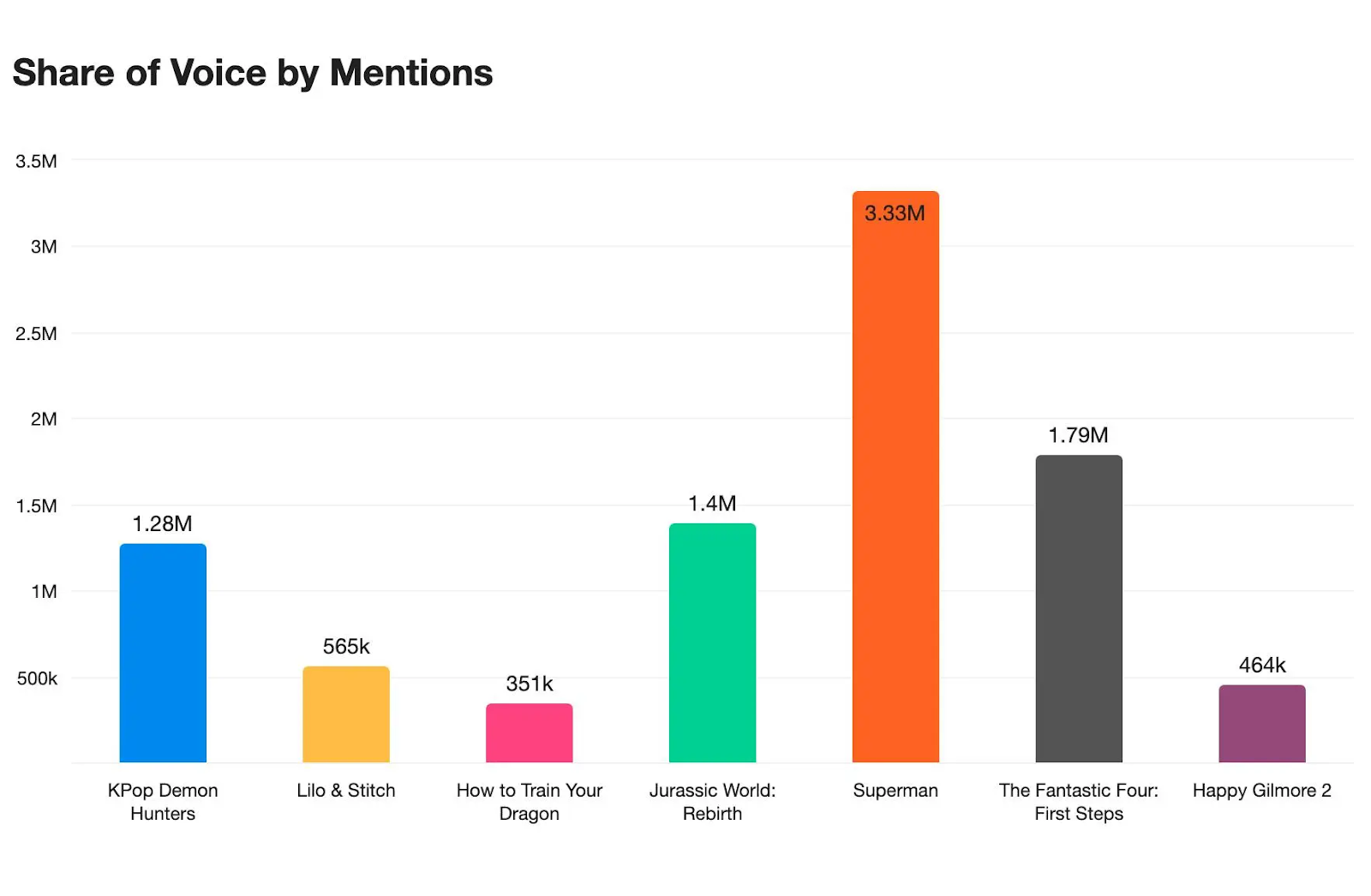
That’s a serious win for a non-franchise, non-sequel film and a testament to the strength of its digitally native audience.
How Netflix activated fandoms at scale
From the jump, Netflix treated KPop Demon Hunters not like a product to promote, but a community to build.
The streamer worked in-step with K-pop fan culture by consistently posting relatable content, spotlighting influencers, and tapping into familiar fandom behaviors. For example, even before the film’s viral peak, the brand was sharing behind-the-scenes clips and memes showcasing K-pop stars in playful, self-deprecating ways.
One standout was a viral Instagram Reel of Jay from ENHYPEN dancing to the movie’s choreography. Jay isn’t even featured in the film, but that didn't matter. The post racked up more than 880,000 engagement actions and an estimated US$1.2 million in earned media value.
Fan-made content followed naturally. On Pinterest and Bluesky, over 65,000 mentions included custom artwork, memes, and aesthetic boards. YouTube saw more than 12,000 videos referencing the movie, including an 8.4 million-view clip of an artist redrawing a character in two distinct art styles.
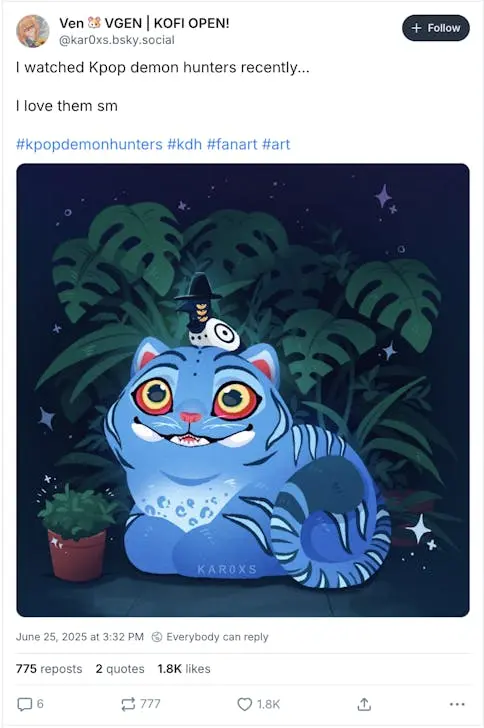
Even brands are joining the wave. Instant noodle giant Nongshim recently announced a global collaboration with KPop Demon Hunters, featuring characters like Lumi, Mira, and Joy across limited-edition snacks and sauces.
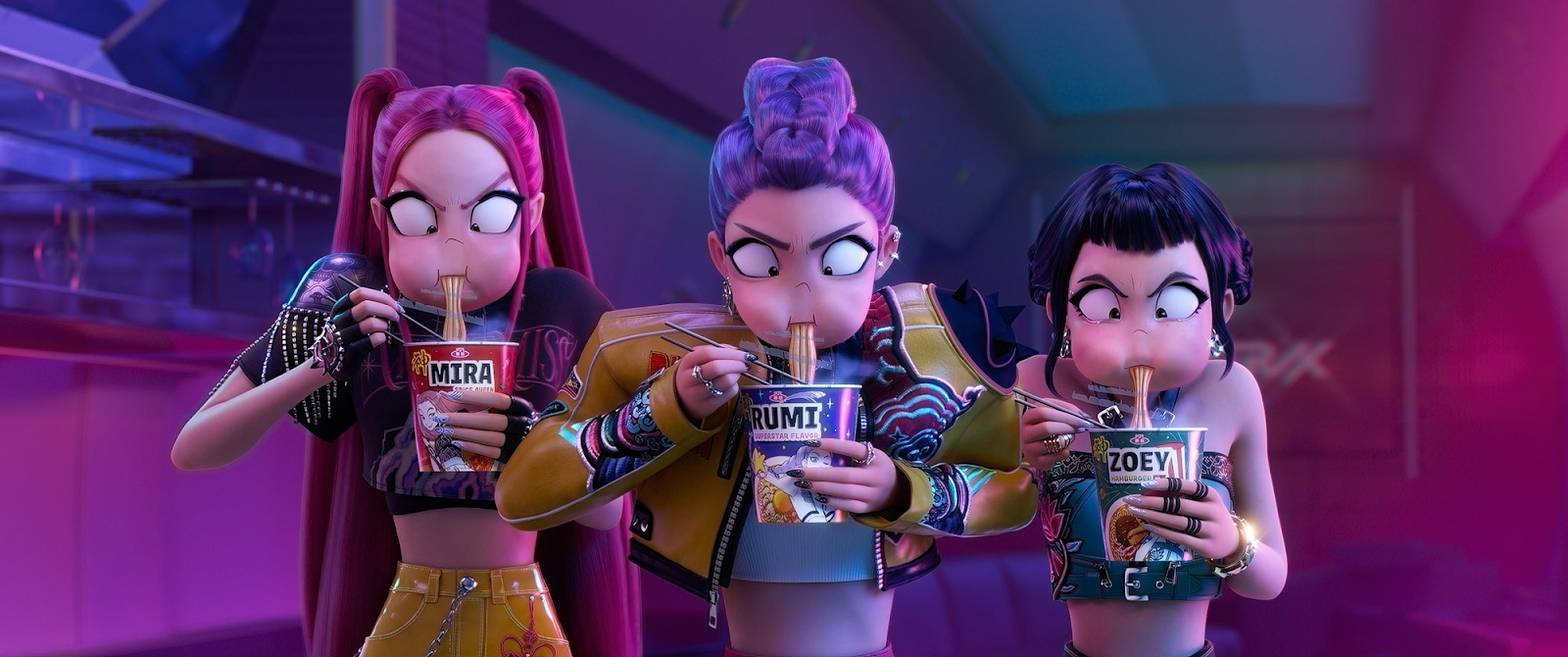
And then came the spark that set everything ablaze.
The Jungkook effect: real-time engagement done right
On July 14, BTS member Jungkook livestreamed his reaction to the film and cried.
Within hours, a fan video of the moment was reposted by Netflix’s X account. The streamer also updated its profile image and bio to reference the now-iconic watchalong. In short, they went full fandom.
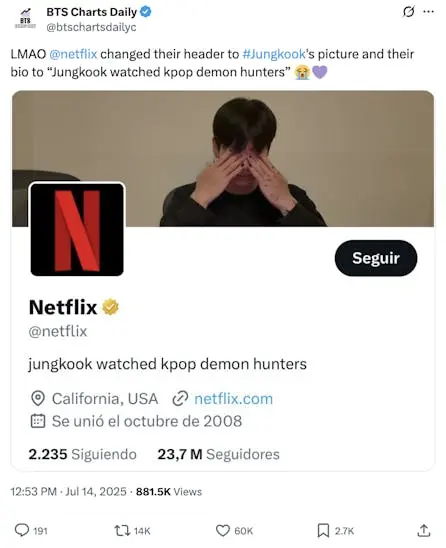
The move wasn’t accidental. It was the product of weeks of consistent K-pop engagement. Netflix had already been talking with fans, not just at them, which made the pivot from passive content to active conversation seamless.
The result? A measurable spike in interest, sharing, and likely viewership. It’s a textbook example of how cultural intelligence and social agility can outmatch budget and brand equity.
What marketers should know
KPop Demon Hunters wasn’t just a streaming win. It’s a clear example of how media companies and brands can activate digital communities with intention. Below are three practical lessons marketers can take from Netflix’s viral playbook, each grounded in what worked and why it resonated.
1. Fandoms aren’t customers. They’re collaborators
Netflix gave fans fuel, then co-signed the best of what they made. From dance challenges to fan art, community content wasn't sidelined. It was surfaced and celebrated.
Try this: Build campaigns with remixable content assets and signal boost standout creators to turn casual fans into advocates.
2. Reactivity wins when backed by consistency
Netflix wasn’t just fast on July 14. They were prepared to be fast. That readiness came from investing in fandoms weeks in advance.
Try this: Use social listening tools to map subcultures and keywords in advance. Know your audience’s micro-moments before they trend.
3. Originality still cuts through
KPop Demon Hunters is a new concept, not a reboot. That worked in its favor. Audiences showed they’re hungry for fresh ideas as long as they’re executed with care.
Try this: Don’t default to franchise thinking. Use fandom insight to inspire new stories, not just extend old ones.
KPop Demon Hunters didn’t win on search or spend. It won because Netflix treated its audience like a creative partner, not just a target.
As marketers face shrinking attention spans and algorithmic volatility, this is a case study in what still works: cultural fluency, creative speed, and community-first storytelling.




